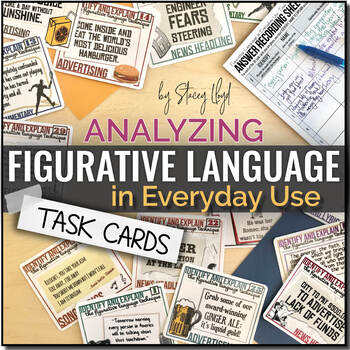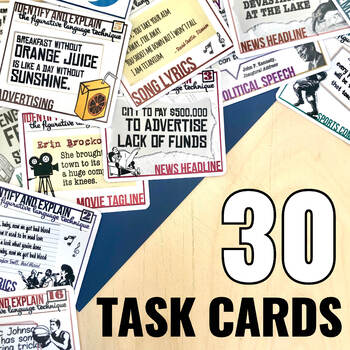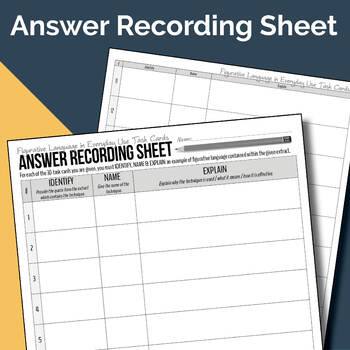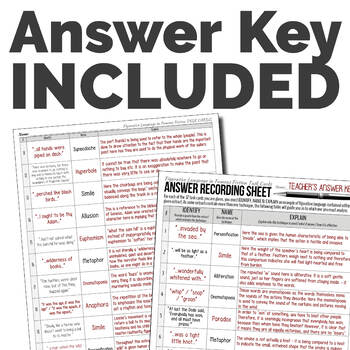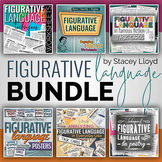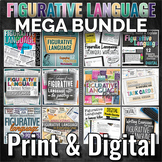Figurative Language in Everyday Use TASK CARDS
- Zip
What educators are saying
Also included in
- All you need to teach figurative language terms and techniques: Worksheets, posters, task cards, and more! Plus all materials were all designed with teenagers in mind, and so are age-appropriate and visually appealing. SAVE over 20% by buying this pack!Products in this pack:Teaching Figurative LanguPrice $16.99Original Price $21.46Save $4.47
- All you need to teach figurative language terms and techniques: worksheets, task cards, posters, and more! Including print (PDF) and digital (to use with Google Slides™) versions, all materials were designed with teenagers in mind, and so are age-appropriate and visually appealing. Plus, you will gPrice $24.99Original Price $40.16Save $15.17
Description
Students often know the names of various figurative language techniques, but when it comes down to identifying them in use and explaining their effect, they often struggle. Therefore, these Task Cards focus on assessing that ability.
**************************************************************************
LOOKING FOR A DIGITAL VERSION? These worksheets are designed to be printed and completed on paper. If you would prefer a DIGITAL VERSION, CLICK HERE!
**************************************************************************
Similarly, students often associate figurative language with poetry and don't identify it everywhere else. Therefore, these Task Cards help to draw their attention to figurative language in use in the world around them. (For example, examples from sports commentary, advertisements, newspaper headlines, political speeches and more).
LEARNING OBJECTIVE:
Students will be able to interpret words and phrases as they are used in poems, determining figurative meanings and analyze how specific word choices shape meaning or tone.
CONTENTS
Task Cards: There are 30 task cards (5 pages / 6 on a page)
Techniques Definitions – Informational Handout: This reference page covers all the techniques assessed in these task cards and is useful for students to keep in their books.
Answer Recording Sheets (3 pages): These pages are for students to stick in their books and use to record their answers to all of the task cards.
Full Answer Key: This answer key is a reference page for teachers and contains suggested answers for all task cards.
*************************************************************************
Please Note: These Task Cards are for assessment purposes, not for teaching content – students should be familiar with the figurative language techniques in question.
If you require resources for the teaching of figurative language techniques, check out the following products:
TEACHING FIGURATIVE LANGUAGE WORKSHEETS
FIGURATIVE LANGUAGE WORKSHEETS {IDENTIFY, NAME AND EXPLAIN METHOD}
For more figurative language products, you might also like these

